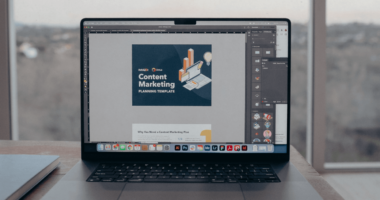Around 15 years ago, HubSpot started publishing an annual survey report – the “State of Inbound”. (Here’s the report from 2011 – how times have changed!) Over the years, they’ve surveyed thousands of marketers to find out what’s working for them, and to gather new benchmarks and insights that keep up with the times. Now, hundreds of SaaS brands have followed suit.
There’s the State of the Creator Economy from ConvertKit (now Kit), the Online Ordering Trends report from DoorDash, the State of Video from Wistia… and tons more.
Why are more and more SaaS marketing teams investing in market research?
Marketing research reports are helping SaaS companies to increase brand awareness, position themselves as thought leaders, generate new qualified leads, convert existing contacts, and guide product development, so it’s no wonder why everyone’s jumping on it, and continuing to do so year after year.
Even 10+ years after launching their first annual marketing report, nearly a third of HubSpot’s State of Marketing downloads are net new contacts, and they’ve generated an average 140% return on investment from this campaign.
The team at Nectar has found that surveys have helped their backlink strategy significantly, getting them placements they would never have been able to secure without original research.
What’s the difference between marketing research and market research?
Before brands started doing “marketing research,” or reports that combine audience survey data with software platform data, expert insights, and actionable resources, they relied on traditional market research and consumer reports from organizations like Forrester, McKinsey, and Deloitte. These more traditional market research surveys are often expensive, less customizable to the brand, and can take longer to produce, limiting how frequently companies can publish new research.
In response, many brands have taken research into their own hands. They produce new content yearly (or more often), either internally, or with a marketing research consultant or agency, and pair the findings with key takeaways and calls to action to highlight how their product can help solve their audience’s challenges or improve business results.
Something important to note up front here is that market research is hard. It’s time consuming and leaves a lot of room for error. (Ever heard of the book How to Lie With Statistics?) But today, gathering new data and drawing conclusions can be anyone’s game.
Let’s get into the most common ways that brands get market research wrong.
What SaaS brands get wrong about original research campaigns
Many SaaS marketing teams have zeroed in on the benefits of new consumer data, and now they’re working on ways to maximize market research throughout their organization. Watch out for these roadblocks, challenges, and mistakes that can impact the quality and outcomes from research campaigns.
1. Don’t leave enough time for strategy + research planning.
A brand new market research campaign, from background research, to survey design, to survey administration, to data analysis, to copywriting, to design, to creating promotional assets, can take upwards of 6-8 weeks when you work with an external market research firm. In-house, it can take around 4-6 months.
If you don’t leave adequate time for each step, or outsource market research to a trusted partner, you’ll be rushing, and with that, you’ll see poorer results.
2. Don’t partner with the right market research consultant or agency.
We hear stories all the time where SaaS marketers have partnered up with the wrong data firms or market research companies. They deal with delays in receiving data, data analyses that are severely lacking in original insights and takeaways, and spreadsheets that leave their marketing team picking up the pieces and spending tons of time creating graphs and data visualizations.
The right data partner should collaborate with your team and take the work off your plate and save you time, not the other way around.
3. Rely on internal teams that have no bandwidth.
If we had a nickel for every time we heard “our data team can’t get that info for another few weeks”…we’d be able to close up shop. Internal teams, whether that’s data teams, content strategists, designers, brand managers, or product teams, are so backlogged, marketing projects get deprioritized almost every time.
Consider what absolutely needs to be done in-house and what can be outsourced. When it comes to data sources, there are likely areas where you can gather new survey findings, and supplement with one or two data points from your product team, rather than relying on the product data for the entire report.
4. Expect people with no experience to take on complex tasks like survey design and data analysis.
Survey design isn’t as simple as writing a question, like “What marketing channel is best for your company? A. Email, B. Social, etc.” There’s a strategy behind how you design survey questions that impacts the quality of the responses. Similarly, interpreting a data analysis and writing a thoughtful story to share the results isn’t simple either.
By expecting one person (probably a marketing manager) to become a data scientist, market research analyst, data storyteller, and copywriter, in addition to their day job, you can also expect that person to hit a wall and experience burnout before your campaign is over.
Spread out the responsibilities and lean on individuals or teams that have specific market research experience and skills.
5. Use AI as a replacement for data analysis and storytelling.
AI is great for so many reasons, one of which being its ability to interpret large amounts of data. However – AI is not a replacement for data analysis and storytelling. AI can be a tool during the data analysis process, but it hasn’t quite gotten to a point where it can look at results from a large-scale survey and make meaningful conclusions about what’s most important to your audience.
Work with your PR and brand teams to consider the most unique, impactful storylines for thought leadership and to position your findings in the best light.
6. Try to gather data via social media polls.
When creating a new industry trends report or consumer research report, there are a few ways to gather new data. First – you can conduct a new survey among an audience, like end users of your product or service, or decision makers in your industry using a pay-per-response platform like Pollfish. Second – you can share a survey on social media or via email using Google Surveys or Survey Monkey to gather free responses from your audience. Third – you can pull anonymized insights from your software platform user behavior.
New surveys are ideal – they’re a random audience, making the results less biased, and you can guarantee that you’ll get results within a certain time frame. On Pollfish, for example, depending on your sample size and qualifying questions, you can get results in as little as a few days.
Collecting responses from social media is riskier – you don’t know how long it might take to generate enough responses for a large enough sample, and your audience may be skewed as they’re from your own social following.
Anonymized product insights are a great supplement, but can be hard to obtain from internal teams.
7. Not collect enough responses for cross-tabs.
Clients always want to know how large of a sample is the minimum recommended size. When working with data, you always want to have enough respondents to be able to analyze different sub-groups or cross-sections.
For example, if you have a sample size of 200 and you want to look by generation, you need to have a large enough sample size within each group, say Gen Z, Millennials, Gen X, and Baby Boomers. If you had a perfect split, that would be 50 each, which is a reasonable size for interpretation.
In general, the more respondents, the better for analysis, but we recommend a minimum of 250 for a standard analysis, and at least 500 for more complex cross-tabs and analysis.
8. Tailor the campaign to a single goal or team.
Market research has so many benefits, but these can get lost if you’re laser-focused on a single goal. Proprietary data and industry trends reports can help support:
- Lead generation and MQLs/SQLs
- Converting existing contacts into leads
- Brand awareness and backlinks
- PR and media opportunities
- Sales enablement
- Cross-selling and upselling
- Product strategy and roadmap
- Investor relations
- Advertising campaigns
- Organic traffic and SEO
- Partner strategy and comarketing
Think about the campaign holistically and bring in relevant teams early on in the process.
9. Forget about promotion and distribution and only plan for content creation.
If a report gets published, and there’s no way for anyone to find it, did it even launch? Answer – no.
A market research report campaign is a huge undertaking. It can feel like finishing the design of the report is the finish line, but it’s not. If there’s no way for your audience to find out about the report and findings, all that work you put into a campaign is essentially wasted.
All proprietary research campaigns should have a promotional plan that includes:
- Email marketing
- Social media promotion
- Paid ads
- PR/media
- Website banners/announcements
- Blog posts
- Thought leadership + executive perspectives
- Customer marketing
- Sales enablement
Events or webinars that supplement your report are nice-to-haves.
Don’t forget to track the success of each channel and bring any learnings into the next campaign.
10. Conduct US-only or single-country surveys, ignoring regional teams and markets.
We live in a global world. The global SaaS market is projected to be valued at over $1T by 2032. It’s currently valued at around $300B, around a third of that coming from North America. That leaves two-thirds of the market outside of the United States, and incredible opportunities for SaaS growth.
When conducting new market research, think globally. This doesn’t mean each region has to start from scratch. Many SaaS companies build out industry trends reports in their primary region, then create localized versions of the report in growing areas, like APAC, LatAm, and EMEA. These regional marketing teams are often more limited in their resources, so think about ways you can repurpose content and promotional assets from the original campaign.
11. Only use a download landing page without teasing the findings and considering SEO.
One of the biggest questions that we get when partnering with our clients on marketing research reports is – How can we balance lead generation goals with organic traffic goals when we publish the report? What they’re saying is, we want to gate the content behind a form, but we also want to make sure we’re bringing in organic traffic through the landing page.
An effective solution is a hybrid of a simple download landing page and a fully web-based report – a landing page that teases the findings and has a download form for the full data report.
Here’s an example from DoorDash – this longer landing page for their annual trends report includes a good amount of information, but if someone wants even more granular data, they’ve got to provide their email.
As a bonus, the individuals that provide their information are self-selecting as qualified contacts. They’re raising their hand for market research, meaning they’re likely a decision maker and interested in more executive-level content.
12. Include only quantitative data.
Survey results are meaningful, but in today’s AI-generated content space, qualitative insights from individuals are invaluable. Bring in qualitative responses from your survey audience (but don’t ask too many open-ended questions – trust me!). And, ask executives from your team, partner brands, or experts in your industry for their perspective on the data you’ve collected and predictions for the future.
Partner with a SaaS market research company that’s created industry trends reports for 7+ years
Did anything from this article make you think? Shift your perspective? Resonate with you? Reach out to our team – we’d love to talk marketing, research, Boston-area beaches, smoothie recipes, or whatever’s on your mind! 🙂
This article was originally published on LinkedIn on June 12, 2024.







